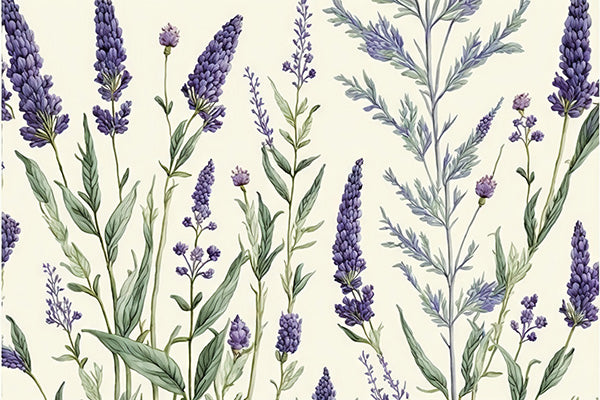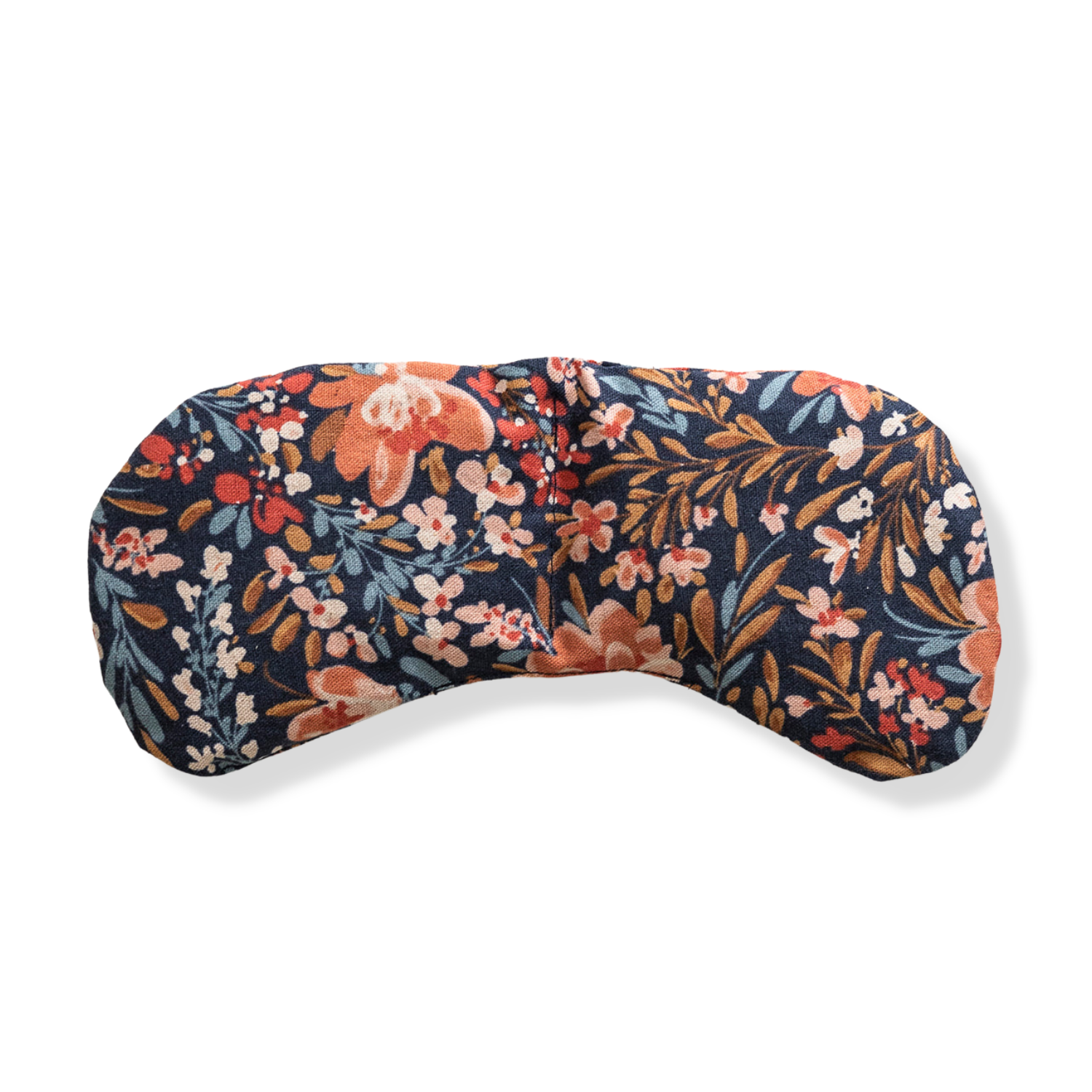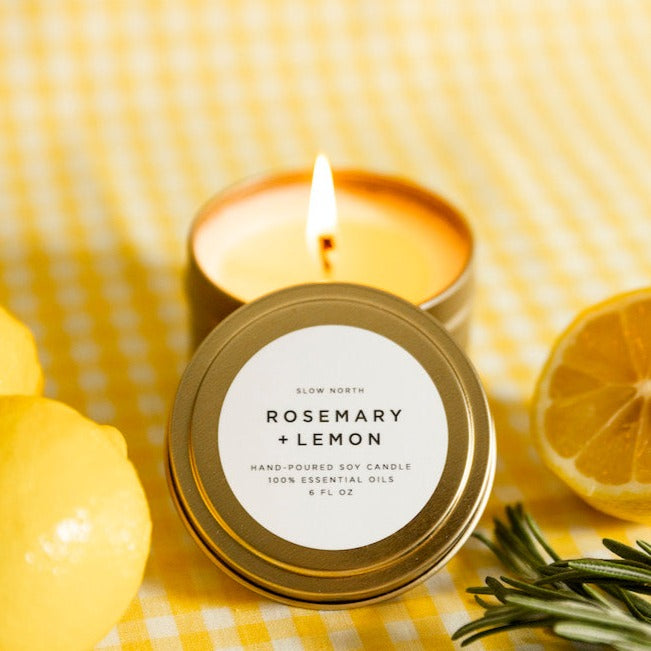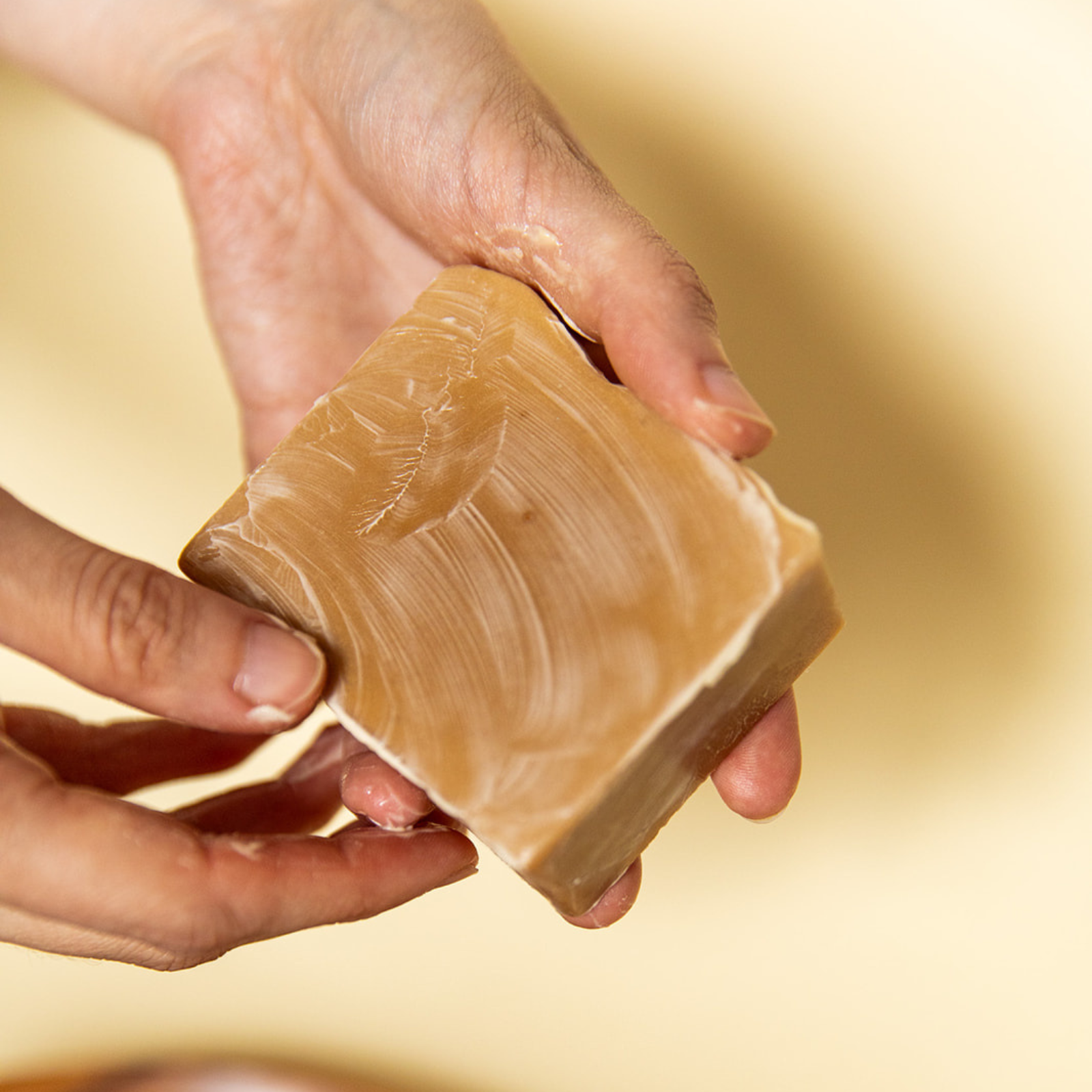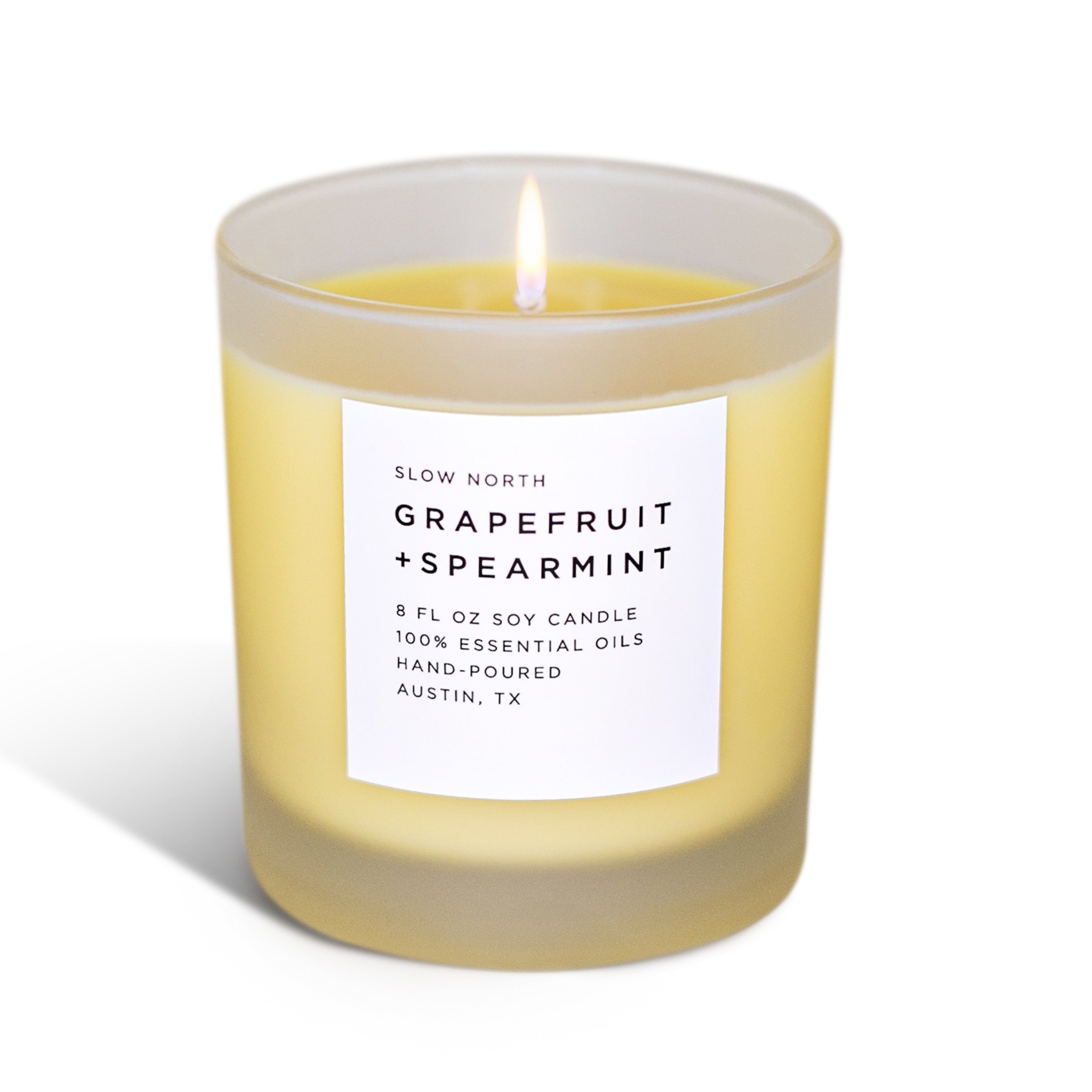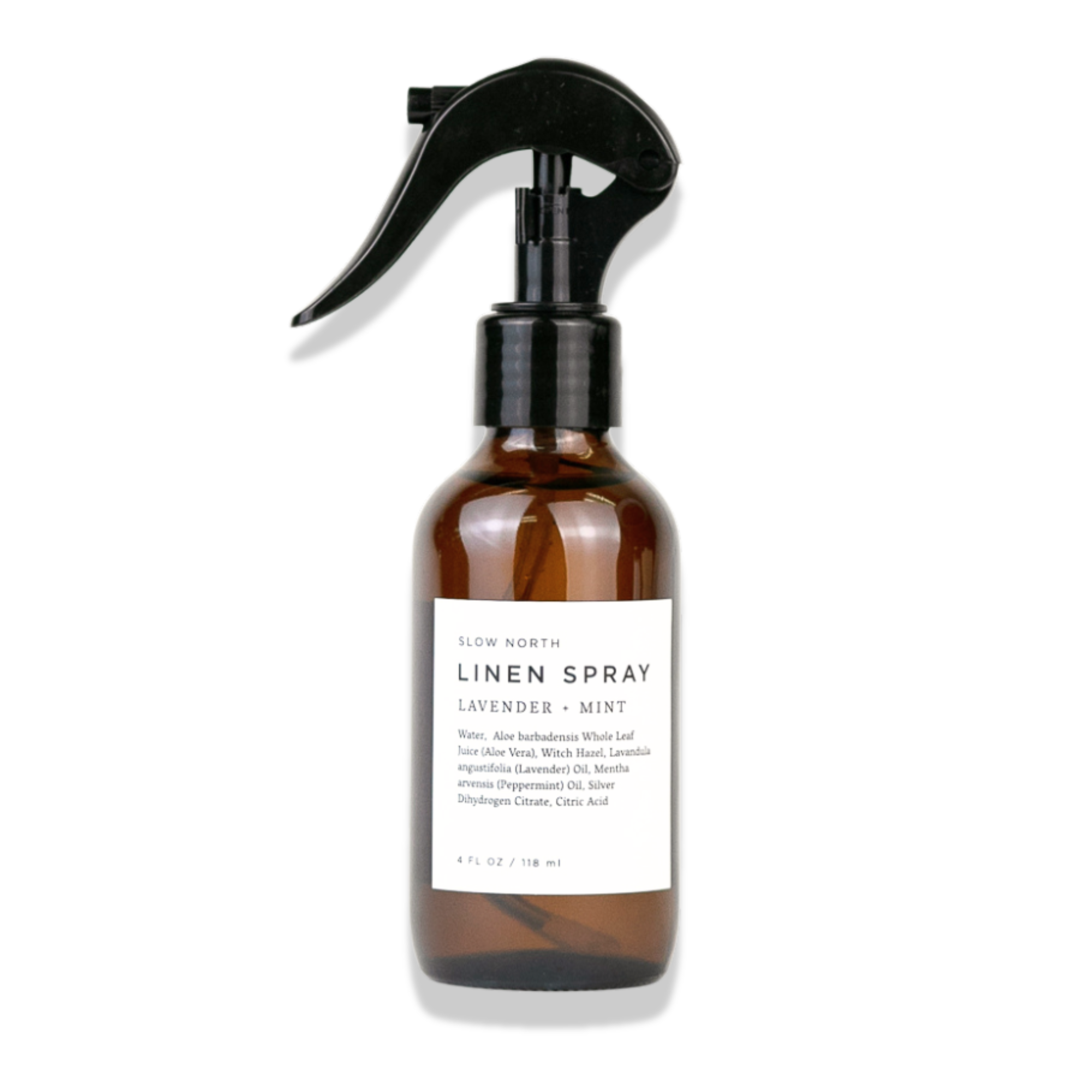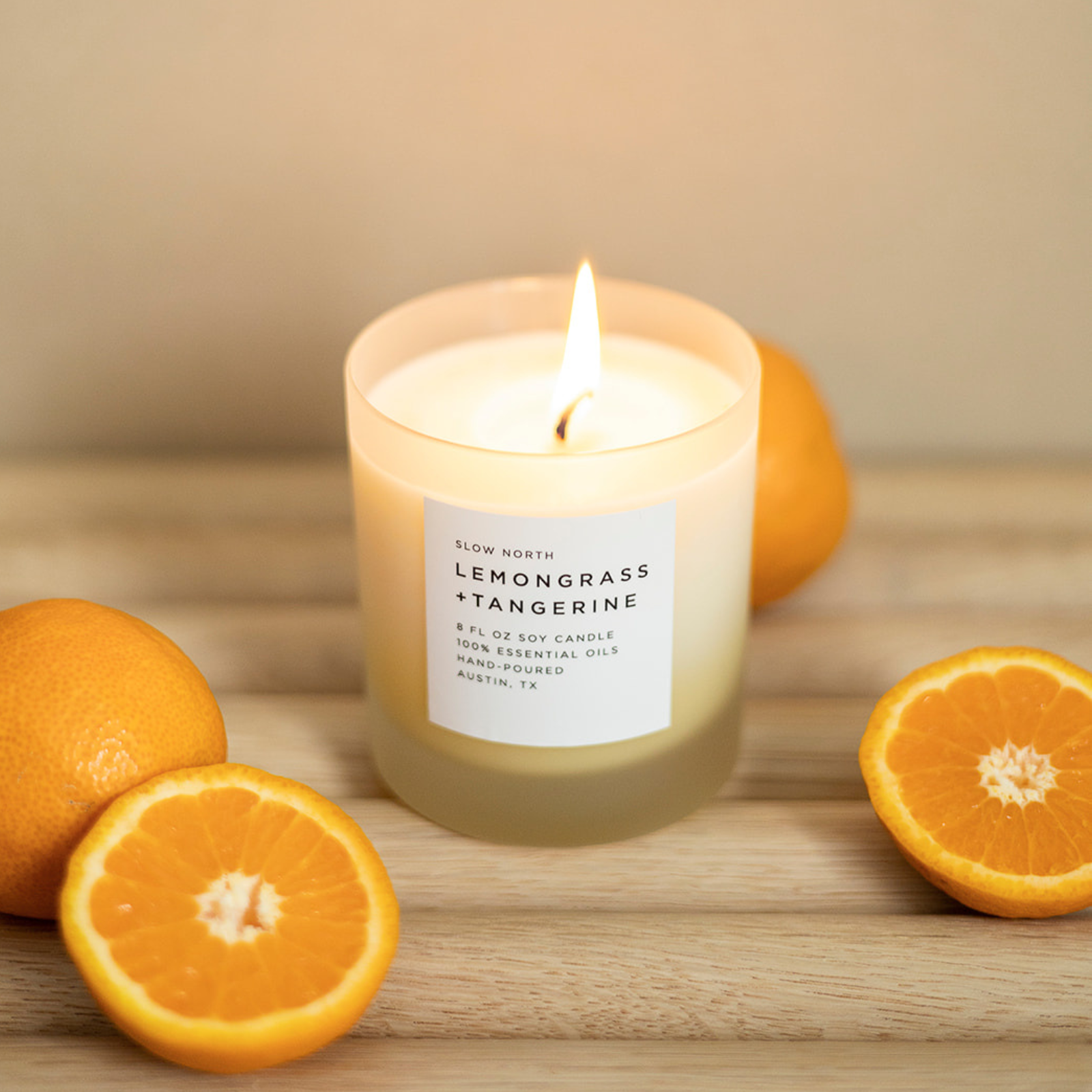
Soap Shopping Field Guide: How to Find a * Truly * Natural Bar Soap
The other day I was in the shower and absent-mindedly reading the label on our natural-sounding shampoo. Imagine my disappointment at seeing that one of the ingredients included the word '-paraben' — a signifier of a hormone-disrupting petroleum by-product. And don't get me started on how often I see these types of harmful ingredients in children's shampoos :/
Petroleum-based chemicals are linked to immunotoxicity and damage to our body's system of hormone regulation. And, they are everywhere — even in products labeled natural, or whose branding implies natural, safe ingredients.
I've been disappointed so many times with natural purchases that I've developed a (fast and efficient) system for reading labels. I also enjoy learning more about the production process and companies behind certain products — but I realize not everyone has the time of inclination for deeper research.
Shouldn't it be easy to buy products that are safe for our bodies, our families and our community?
I want to share my field guide to shopping for natural bar soap to help find the perfect soap for daily use. This article works well for other types of skincare products as well.

First, Why do We Need a Field Guide?
- Sometimes when a product calls itself natural, it doesn't mean that it's free of skin irritants, allergens, or chemicals linked to cancer...
- ...because the word natural isn't regulated by an agency like the FDA — natural products can contain ingredients that are known or potential hazards to human health
So, in order to find the authentically best natural products, we have to fortify ourselves with a little knowledge about how to navigate ingredient lists and labels in the 'natural' products aisle.
How this article is organized
- First, we'll learn to recognize a 4 hazardous ingredients that make their way into soap.
- Next, we'll learn about certifications and seals
- Next, we'll understand the basics of the soap making process
- Finally, we'll look at Slow North's products, and learn more about how to evaluate a company behind products
4 Common Red Flags: If You See These Ingredients on a Soap Label, Reconsider Your Purchase
- Fragrance or Parfum
- Sodium Laureth Sulfate
- Synthetic Dyes and Colorants
- Preservatives like Methylisothiazolinone
Fragrance or Parfum
While the FDA requires skincare products to list ingredients, fragrences are 'trade secrets' and therefore allowed to hide many ingredients under the generic moniker 'fragrance'. Typically this means that the scent is formulated with a synthetic fragrance (vs. fragrance derived from organic ingredients IE essential oils), which can include parabens (petroleum by-products).
Even products with natural ingredients like Goat's Milk, Olive Oil, Oatmeal and more can include synthetic fragrances. Therefore, we believe it's best practice to check labels.
The EWG has listed 'fragrance' as a level 8 - a high risk of allergies and immunotoxicity.

Sodium Laureth Sulfate (SLES)
SLES is an additive to soap - soaps don't require SLES to be effective. It does however create a (admittedly satisfying) foam that 'feels' like it's cleaning. If you've ever used truly natural cleaning sprays, then you've experienced the dissonance of expecting a cleaner to foam and have it look...exactly like water. Your mind rebels, telling you that this isn't an effective cleaner.
On the other hand, it's not a great sign if your bar soap — something that is applied directly to your skin — shares key ingredients with disinfectant spray cleaners for kitchen counters.
Marketing agencies have trained us to equate foam with clean (even though they are separate) — to the point where it's hard to go back, even with the knowledge that the foam isn't the cleaning agent, and that actually the foam is an ingredient that can cause low-grade allergic reactions in some people.
The Environmental Working Group is an organization that rates and classifies various chemicals found in skincare, cleaning and other products. They've given SLES a rating of 1-3, meaning it's not the worst, but still had linkages to allergies and immotoxicity.

If you see this or the base compound of this chemical, Sodium Laural Sulfate (SLS) in a product, even if it's a natural product, steer clear.
Dyes FD&C
Large commerical cosmetic and skincare companies love bright colors - they stand out on store shelves and appeal to consumers. Health considerations are 100% secondary. Indeed, many dyes used in skincare products are hazardous to human health.

FD&C designation stands for Food, Drug and Cosmetics. These artificial dyes are typically a combination of up to 20 chemicals. Look out for:
Red #40 - can be a factor in allergies and immunotoxic reactions, according to the EWG.
Yellow #6 - Also known as sunset yellow, food yellow #3 and disodium salt, Yellow #6 is a known allergen and immunotoxicity risk.
Green #3 - According to the EWG, this ingredient has a 'moderate' cancer risk.
Let's look at our last 'red flag' ingredient.
Preservatives like Methylisothiazolinone
I had to look up an audio file to pronounce this ingredient, which has 8 — sorry, 9 — syllables. This doens't bode well for a chemical found in soap, especially if we're looking for non-toxic, natural ingredients for natural bar soap.
Methylisothiazonlinone is a preservative added to soap to increase the shelf life. That's it.
Many commercial soaps package their soaps in water-proof packaging, which keeps the moisture locked in their product. The downside of this approach is that this could lead to the growth of mold or bacteria. So, they add this preservative to increase the shelf life for up to 1 year+.
I don't know about you, but I typically use soap I've purchased after a month or two, at most.
This isn't so much a chemical added for the convenience of consumers, but rather so that companies have a product that can be sold for up to a year after manufacture. This alone should tell you all you need to know about the product you're about to purchases.
The Environment Working Group rates this product as a 7 (10 is the worst on their 1-10 scale). This chemical is linked to neurotoxicity in mammals, allergies, and and immunotoxicity.

That completes our list of common red flag ingredients to look out for as you're shopping Amazon, a maker's market, or your local grocery store for natural bar soap.
Now that you've identified 4 major red-flag ingredients, you're sure to be able to go soap-shopping with confidence, know that you'll be more equipped to purchase products that are safe for your skin, your loved ones and the local community.
Before we move on, let's understand a little more about why these ingredients are so harmful.
The Consequences of Unsafe Ingredients
As we explore the impact of unsafe ingredients in soap, we first turn our attention to the skin, our body's protective barrier. Unsafe ingredients can create a cascade of unpleasant side effects, from irritation and dryness to more severe conditions. Understanding these potential consequences is vital for informed choices in skincare.
Long-term Health Effects of Exposure to Unsafe Ingredients
The consequences of prolonged exposure to unsafe ingredients in skincare products extend far beyond immediate skin reactions. While immediate irritations like rashes, redness, or itching are concerning, the real worry lies in the potential for chronic health issues to develop over time.
Research has shown that some harmful chemicals found in skincare products can be absorbed through the skin, leading to long-term health implications. These may include endocrine disruption, which can affect hormone regulation, and even more severe conditions that can manifest years after initial exposure.
Environmental Impact of Unsafe Ingredients
The influence of unsafe ingredients is not restricted to our bodies alone; it also casts a shadow on the environment. When these harmful components are present in soap and other skincare products, they can inadvertently find their way into waterways.
This contamination can be detrimental, disrupting aquatic ecosystems and threatening the well-being of marine life. Some chemicals are 'forever chemicals', which do no break down and end up in rivers, streams, oceans and eventually accumulating in our bodies and the bodies of other animals.
As we explore this broader perspective, it becomes evident that the need for safe ingredients extends beyond our personal health; it's a call to protect our planet as well. In this way, the quest for safe ingredients aligns with a more profound commitment to preserving both our well-being and the health of the environment.
Identifying Safe Soap Ingredients
Embracing the Gifts of Nature: Recognizing Natural and Safe Ingredients
Oils (Olive, Coconut, etc.): Nature provides us with a treasure trove of safe ingredients, such as olive and coconut oils. These oils offer gentle cleansing and nourishment, promising a harmonious relationship with our skin.
Essential Oils: The aromatic wonders of essential oils not only delight our senses but also contribute to the safety and purity of soap. They bring their unique qualities, adding a touch of nature's magic to our daily routines.
Natural Colorants: Infusing soap with natural colorants adds an aesthetic dimension. These colorants come from the Earth's palette, ensuring our soap is both safe and visually appealing.
Natural colorants do exist and tend to look — well, natural. They look like colors you'd find in spices and in nature because that's what natural colorants tend to be. Tumeric can be used as a yellow colorant, Moroccan red clay for red, and spirulina for a greenish blue cast.
The following image shows some of the colors you can expect in naturally-colored soap (from Slow North's line of soaps, which use only natural ingredients for color):

Next: Understanding Certifications and Seals
Identifying Credible Certifications and Seals
EWG Verified
You might have noticed whenever we discussed a particular chemical, the EWG (Environmental Working Group) was our go-to source for evaluating the health and safety of a particular ingredient. From the EWG mission page:
The EWG's team of scientists, policy experts, lawyers and communications and data experts work tirelessly to reform our nation’s broken chemical safety and agricultural laws. We push industries to adopt our standards and stand against chemicals of concern. We educate consumers with actionable information and inspire demand for safer products.
The Environmental Working Group's verification seal is a symbol of trust. It assures us that the soap we choose meets rigorous standards for ingredient safety and transparency.
If I have a question about an ingredient, I will typically open my search engine of choice and type in 'EWG [ingredient name]' - I would recommend using this method instead of searching directly on the EWG site. As valuable as their information is, I have not found the site's internal search to work well.
USDA Organic
This prestigious certification signifies a commitment to pure and natural ingredients. Products bearing the USDA Organic seal are a testament to the harmonious coexistence of our skin and the Earth.
The benefit of looking for 'Organic' products is that the USDA regulates the term Organic. Thus, there are specific rules that makers need to follow in the production of organic soap. It's enough to know that there are a few levels of Organic.
100% organic
These products are made with 100% organic ingredients. Since soap is made with water and water cannot be organic certified, many soap makers replace water with aloe juice so that they can call their product 100% organic. Lye can be certified to be organic, so a soap can technically be 100% organic.
Organic
Many natural soaps fall into this designation. This means that 95% of the ingredients are organic.
Made with Organic
In this designation, 70% of the ingredients are organic-certified ingredients.
To learn more about organic designations, check out this handy article, or read the USDA's explanation of organic labeling practices.
Now that we know a little bit about what to look for, and how soap is labeled, let's look at the production process of natural soap and see how it can help us buy natural soap.
How Soap is Made, and What it's Made of
Essential Elements of Soap
Let's uncover the basics of what makes soap. At its core, soap is made up of three fundamental components:
Oils and Fats: These natural ingredients, often sourced from coconut, olive, or palm, form the foundation of soap, providing cleansing properties and gentle nourishment for the skin. The triglycerides in oils and fat react with lye to form what is technically a salt - which is the detergent property in natural bar soap.
Lye: Also known as sodium hydroxide, lye plays a crucial role in soap-making. It combines with oils and fats through a process called saponification, transforming them into soap. Lye is not an ingredient in the final product, but it is used in the production of soap and so most soap makers include it in the ingredients list (as lye, sodium hydroxide or potassium hydroxide).
Safe, natural additives: Additives such as essential oils for scent, colors, and natural elements add the finishing touches to soap. They contribute to the soap's unique characteristics and sensory experience. Selecting additives wisely is crucial to maintaining the harmony of the soap's ingredients.

The Art of Soap-Making and Its Impact on Ingredient Safety
The process of making soap is a blend of art and science, where the method chosen and the precision with which it's executed determine the safety of soap ingredients. We step into the world of soap crafting, where the balance between these elements can result in either pure and safe ingredients or potential risks. Understanding this process is vital to appreciate the soap we use in our daily routines.
Is Sodium Hydroxide Safe in Natural Bar Soap?
Sodium Hydroxide, also known as lye or caustic soda, is a chemical compound used in the soap-making process. In its pure form, it is caustic and can be dangerous. However, when used in soap production, it undergoes a chemical reaction with oils and fats, resulting in a process called saponification. In this process, the sodium hydroxide reacts completely with the fats and creates new compounds that are safe and beneficial for the skin. The final product, soap, no longer contains sodium hydroxide.

Always make sure to choose products from reputable manufacturers or artisans who follow proper soap-making techniques to make sure that the sodium hydroxide has been fully saponified, leaving behind a safe and effective soap for your skincare routine.
Recommendations for Safe Soaps
When it comes to your skincare journey, it’s important to prioritize safety and wellness. We simply couldn't write a shopping guide for non-toxic soaps without recommending Slow North's natural soaps! Creating healthy, natural products for our own family is part of the reason why we started Slow North way back in 2015. We use our soaps and other products on a daily basis and feel great about recommending them for your family.

From choosing organic ingredients, making in small batches, and using 100% essential oils for our scented soaps, we are committed to crafting products with safe, natural ingredients.
Crafted with Care
Slow North's custom blend of oils, including antibacterial coconut oil and vitamin-rich sunflower oil, ensures that your skin is not only clean but also moisturized. Free of harsh sulfates, it protects your skin's natural oils, leaving it feeling refreshed and healthy.
An Abundance of Skin Soothing Ingredients
Indulge your skin with a lather enriched with soothing colloidal oatmeal and moisturizing shea butter. These hydrating ingredients, combined with Rice Barn oil, Castor oil, and Coconut Milk Powder, offer a gentle cleanse that's ideal for all skin types, especially sensitive or troubled skin.
Versatile and Sustainable
Slow North's natural bar soaps are perfect for both hands and body, making them a versatile addition to your daily routine. They’re a mindful choice not only for your skin but also for the planet.
Pure and Safe Ingredients
Slow North's commitment to natural ingredients is evident in the carefully chosen components of this soap. You'll find Organic Fair Trade Coconut Oil, Organic Extra Virgin Olive Oil, Organic Shea Butter, Rice Barn Oil, Organic Sunflower Oil, Organic Castor Oil, Organic Coconut Milk Powder, and Colloidal Oatmeal on the list.
Putting this soap shopping guide to use
We hope this shopping guide is an effective and easy way to navigate your way through your next soap or skin care shopping trip (online or in person).
We hope this helps you find natural soaps that work great for your skin type. To learn more, check out our complete guide on natural soaps.
FAQs
What distinguishes non-toxic soap from conventional soap?
Non-toxic soap is formulated without harmful chemicals, such as parabens and sulfates, that are often found in conventional soaps. This differentiation makes non-toxic soap a safer and more eco-friendly option.
Is non-toxic soap suitable for children's sensitive skin?
Yes, non-toxic soap can be an excellent choice for children with sensitive skin. Its gentle and natural ingredients make it a safe and effective option for the whole family.
Are non-toxic soaps fragrance-free or do they have natural scents?
Non-toxic soaps can have delightful natural fragrances derived from ingredients like essential oils. These scents are free from synthetic fragrances that can be irritating to the skin.
How do non-toxic soaps contribute to reducing plastic waste?
Many non-toxic soap brands use eco-friendly packaging to minimize plastic waste. Some even offer bar soaps that eliminate the need for plastic bottles, promoting a more sustainable choice. Artisan soaps are often packaged in recyclable cardboard wrappers.
Are non-toxic soaps biodegradable and safe for aquatic ecosystems?
It's hard to say definitely, but non-toxic soaps are typically biodegradable and safe for aquatic ecosystems. They break down naturally, leaving no trace of harm and preserving the delicate balance of water ecosystems.


